Is Parchment Paper Better? Why You Need Parchment Paper In Your Kitchen
*This post may contain affiliate links. See our affiliate policy here.
So I wrote two cookbooks that was all about baking for kids, and in probably 90% of the recipes I recommended using parchment paper to line cookie sheets and pans.
But then I started receiving questions about parchment paper.
- Can’t you just line the cookie sheet with foil?
- You never said to grease the parchment paper, do I need to?
- Why do you call for parchment paper in so many recipes?
- Whatever happened to greasing the pan with oil/Crisco/pam?
So I thought I’d take a minute and explain a few reasons why I think parchment paper (also sometimes called baking paper) should be in your kitchen. Also why in both of my cookbooks, Kid Chef Bakes For The Holidays, and Candy Land The Official Cookbook I use parchment paper so often.
You’ll find rolls of parchment paper in pretty much any grocery store, and it comes in both bleached (white) and unbleached (brown.)
1. Food Doesn’t Stick To Parchment Paper
Have you ever been baking something and had it stick to the pan? It’s really not fun to realize you forgot to oil it, or to saw at the treat you were making with a spatula.
Parchment paper doesn’t need any oil, food simply slides off of it. So rather then poking at a hot pan with a spatula, try parchment paper. You’ll be shocked at how easy you can pull those cookies off the pan.
If you are roasting (vegetables for example) add oil to the vegetables themselves to make them crispier before adding the vegetables to the pan on the parchment paper. No need to oil the parchment itself.
Also if you’ve ever made a loaf bread ( Like my delicious blueberry bread recipe) and had it stick in the pan? It’s really disappointing!
If you line the pan with parchment paper like in this picture, you can simply lift the loaf right out of the pan. I do add a little oil to the sides that don’t have parchment paper, or you can lay a second piece of parchment the opposite direction. Unless I’m making something REALLY sticky, adding a second layer of parchment always feels like overkill to me.
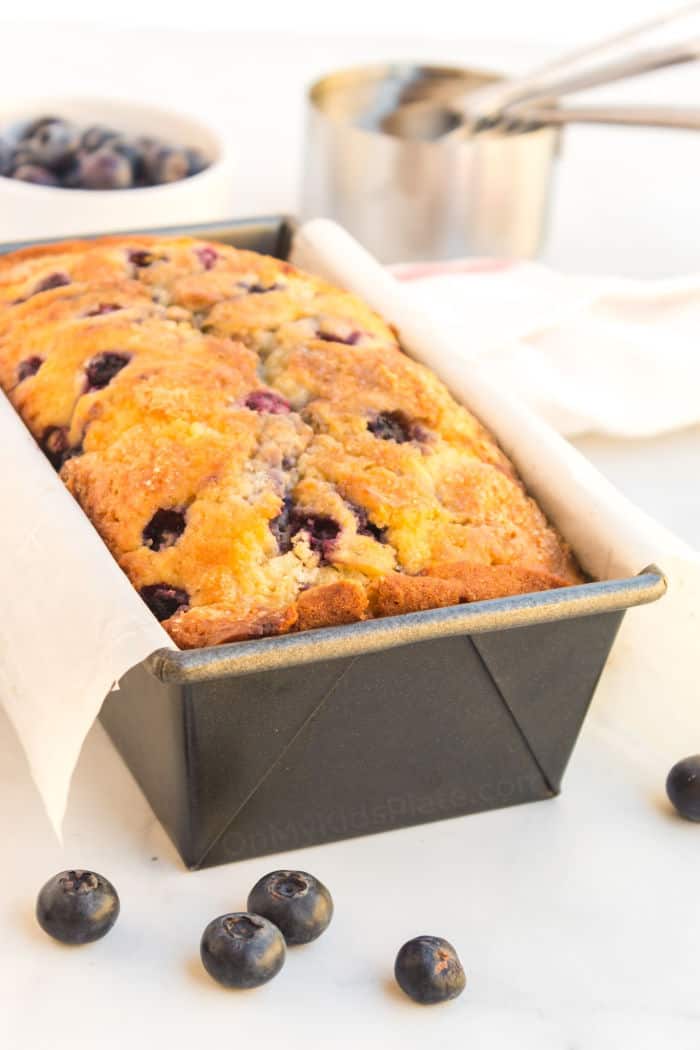
2. Parchment Paper Doesn’t Melt And You Don’t Have To Add Oil To It
Parchment paper is generally safe to use up to temperatures of 420-450 degrees depending on the brand. Most of the time this works well for baking and roasting.
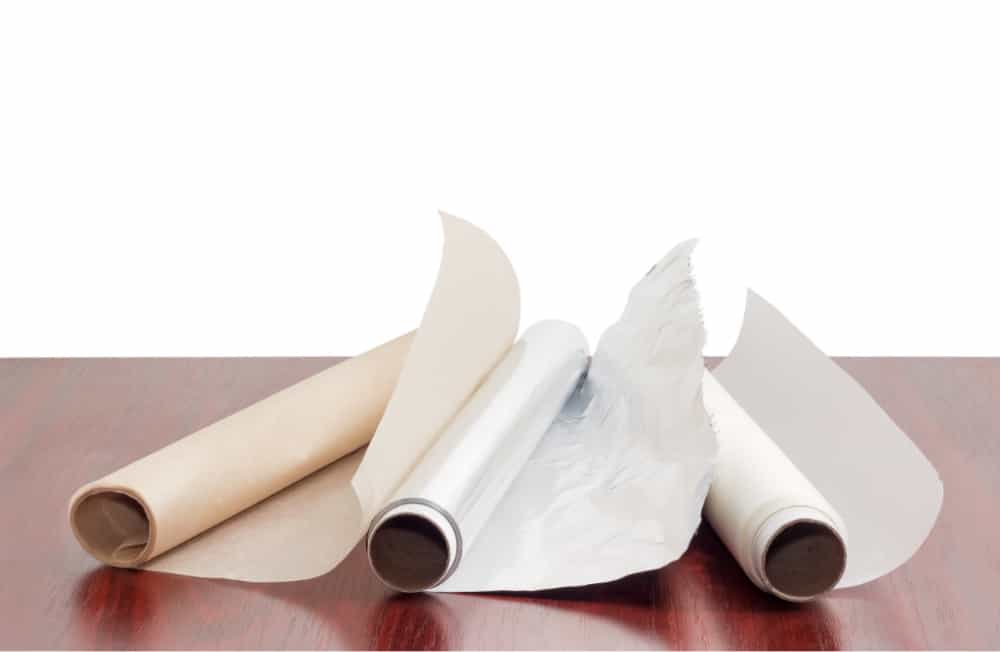
What Else Can You Use Besides Parchment Paper?
- Reuseable silicone mat– Silicone baking mats are probably my second favorite thing to use after parchment paper. A silicone mat is reusable and great for cookie sheets. But if you’re lining a cake pan, brownie pan, or other type of pan a silicone mat can’t really be cut to fit well or you have to buy another mat for that pan. Silicone mats are also great for rolling out dough, and some even come with lines to help you roll out your dough to the right shape and size like this one.
- Wax paper– melts much more easily at higher temperatures because of the wax. You can roll out dough on wax paper s it doesn’t stick to the counter or wrap cool baked goods in it, but don’t bake on it or it will be a hot mess. (Literally, oie!)
- Aluminum foil– works but needs some kind of oil so food doesn’t stick. I like using spray avocado oil, but any kind of pan spray helps to get a fine mist.
- Baking spray- Baking spray is a special spray oil that includes a little bit of flour already in it and is wonderful for helping your treats release from the pan. I like this baking spray for odd-shaped pans- like bundt pans which come in pretty shapes!.
- Just oil or flouring and oiling a pan– also works but can be messy. I use this technique for pans that are odd shapes, like a bundt pan, that I can’t put parchment in. It also can be easy to forget the step of oiling the pan or easy to forget to reoil the pan between batches, especially when cooking with kids.
If you are making something like pizza and the recipe calls for 500 degrees, that’s when I would move to oil or oil and foil.
3. Your Baking Will Be More Even- Help Eliminate Hot Spots
Parchment paper creates a very thin layer between the pan and the food. This little bit of air can help to even out your oven a little bit if you have a spot that cooks a little warm or cool.
You can also use a pizza stone to help with extreme hot spots in your oven
If you have a lot of hot spots in your oven, you can try putting a pizza stone either in the bottom of your oven (if the heating element isn’t there!) or on the very bottom rack.
A pizza stone heats up slowly but also holds onto the heat. This will help heat the oven more evenly so you won’t have burning in one spot and raw in another. I’ve moved a lot, and left a pizza stone in the bottom of one of our ovens on accident because I just left it in there all the time. The oven was old and not consistent in temperature. The pizza stone helped so much.
4. Your Edges On Your Baked Goods Will Be Straighter
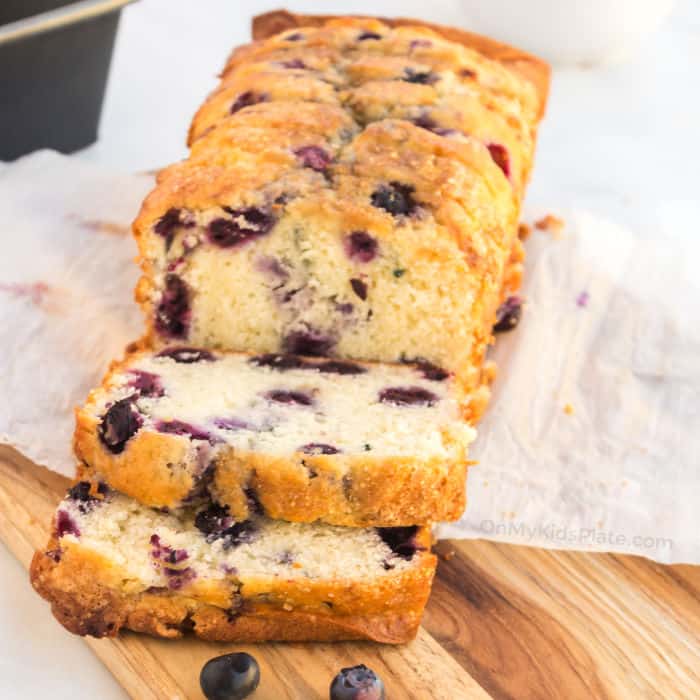
Ever wonder why when you’re looking at a picture of something baked it has perfect edges and yours doesn’t? Parchment paper keeps those edges nice and straight, without sticking to the pan.
You can lift your baked goods right out of the pan. You don’t have to worry about if something will stick in just one spot. No more trying to pull that cookie off the pan with a spatula or taking a butter knife around the outside of your cakes or bars.
5. You Can Use Parchment Paper More Than Once In The Same Batch For Some Baked Goods

If you’re making baked goods that are individual like cookies, whoopie pies, individual pastries or anything that is portioned out in an individual way? (Like these blueberry mini (pie!) galletes, mmmm!) You can totally use that parchment paper again for the next round. So when I am making cookies for example, I just keep reusing the same parchment paper for each batch, and it works every time.
For treats that you have to line a thicker pan like a bread pan or a cake pan, you often need to cut the parchment paper to fit the pan. This parchment paper I don’t typically usually reuse.
6. You Can Cut Parchment Paper To The Right Size
It can be great to use things like a silicone mat to cook with, but unless you’re cooking lots of cakes and brownies most of us aren’t buying mats for those pans. Instead parchment paper can be cut to fit for most pans.
How To Cut Parchment Paper To Fit Your Pan
Cookie Sheets
Cookie sheets are easy! Roll out the paper and cut your rectangle of baking paper to the right size.
Round Pans
- Place the pan on top of the parchment paper.
- Using a pen or a marker, trace the bottom of the pan.
- With scissors cut the parchment paper out, and place it in the bottom, of the pan.
- Add a little oil (spray or with a towel) to the edges of your pan where the baked good touches, but isn’t covered by parchment paper
- When you’re done baking, let your baked good cool completely, then gently flip it onto a cutting board to get it out. Peel the parchment paper off.
Square or Rectangle Baking Pans
- Place your pan on top of the parchment paper, preferably with the longer side up and down (unless it’s a square!)
- Trace the pan on the top and the bottom
- Cut a long rectangle that now fits in the pan, but drapes over the edges on two sides of the pan like a sling.
- Add a little oil (spray or with a towel) to the edges of your pan where the baked good touches, but isn’t covered by parchment paper.
- When you’re done baking, let your baked good cool. Then use the parchment paper hanging over the sides of the pan to lift your treats out of the pan.
OR: Sometimes I just put the parchment in the pan and trim a little of the excess depending on what I’m making. Usually when I feel lazy if I’m honest.
7. Cleanup Is Super Easy
Parchment paper is disposable, which means when you’re done you can just get rid of it. This is especially helpful if you have anything that may bubble out. Have you ever tried to wash cooked apples or anything involving caramel off your pan? What a pain!
Also when you roast vegetables, you won’t spend tons of time scrubbing the cooked-on bits off your pans.
8. You Can Roll Out Dough On Parchment Paper
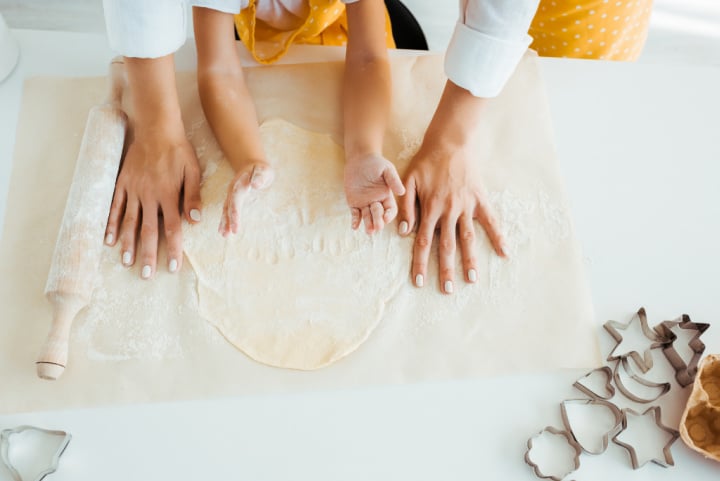
Normally when you rough out a dough like pizza or cookies you need to add flour to your counter. Flour works great but it can also be a bit on the messy side and sometimes the dough still sticks to your counter.
Most recipes that are well developed expect that you will be rolling the dough out in flour, so I just add a light sprinkle to my parchment paper. This means I’m still adding the extra flour the recipe expects but my dough isn’t sticking to my counter.
Adding a ton of flour when you are rolling out the dough can cause the dough to be tough, so a light sprinkle does it. So only add what you need.
You can also roll dough out on a silicone baking mat. I like using baking mats a lot for rolling dough, they are great!
9. Parchment Paper Doesn’t Cause Your Pans To Get As Much Grimy Cooked On Oil
Ever notice how baking pans get that cooked on oil on them after a while that’s next to impossible to get off? Often that comes from using a pan release spray. Most pan release sprays have chemicals added to them, which causes that oil to get stuck even more than it normally would when baked.
I’ve made three big switches to have less caked on, burnt oil on my pans.
- I started cooking and baking with more parchment paper
- I sometimes cook with a silicone baking mat.
- I switched to a non-aersol baking spray that doesn’t include the chemicals.
For a non-aerosol cooking spray, I like Chosen Foods avocado oil (and always find the best deal on it at Costco). See how the spray top is different? This style of spray oil doesn’t have the propellant, which is a chemical that can make the oil stick more to the pans, but we really don’t need it.
You can also get a contraption like a Misto that is reusable and sprays whatever oil you want. I used a Misto for many years, I’m due to buy another one!
Parchment can be great for roasting like when you make these homemade baked potato wedges, or for sheetpan style dinners like this chicken sausage and veggies.
So there we go, all the reasons I love parchment paper! Not only do I use parchment paper more and more when I’m baking now but once I’m starting to use it more when I’m cooking on a sheetpan too.
Do you cook with parchment paper? Have a question about parchment paper and all the other options? Leave a comment down below!

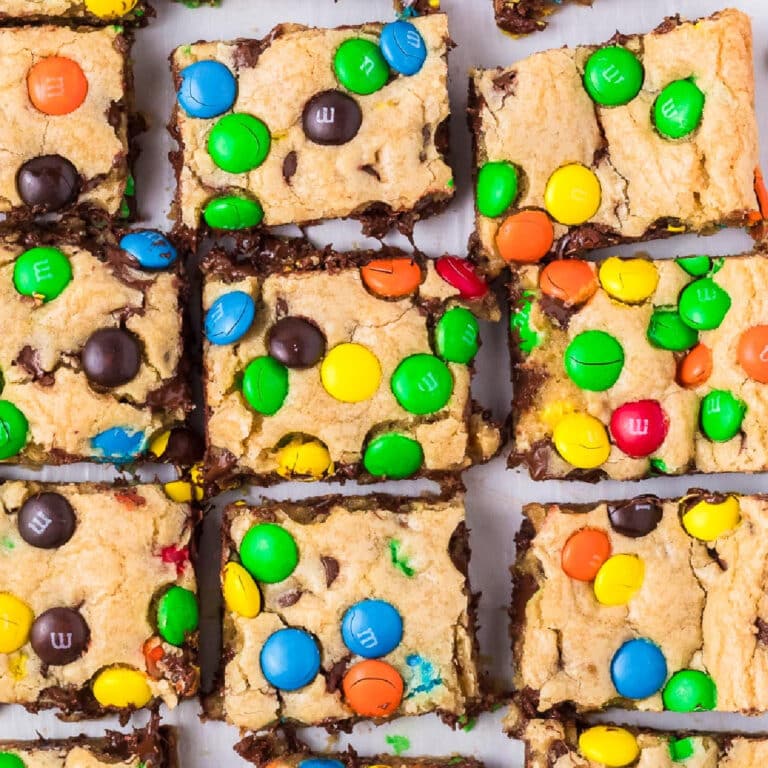
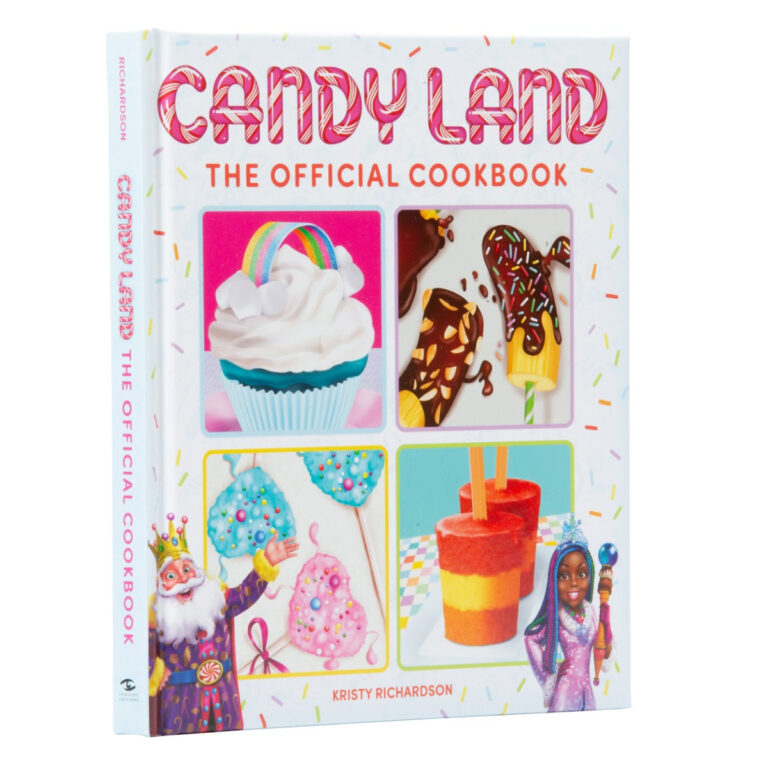

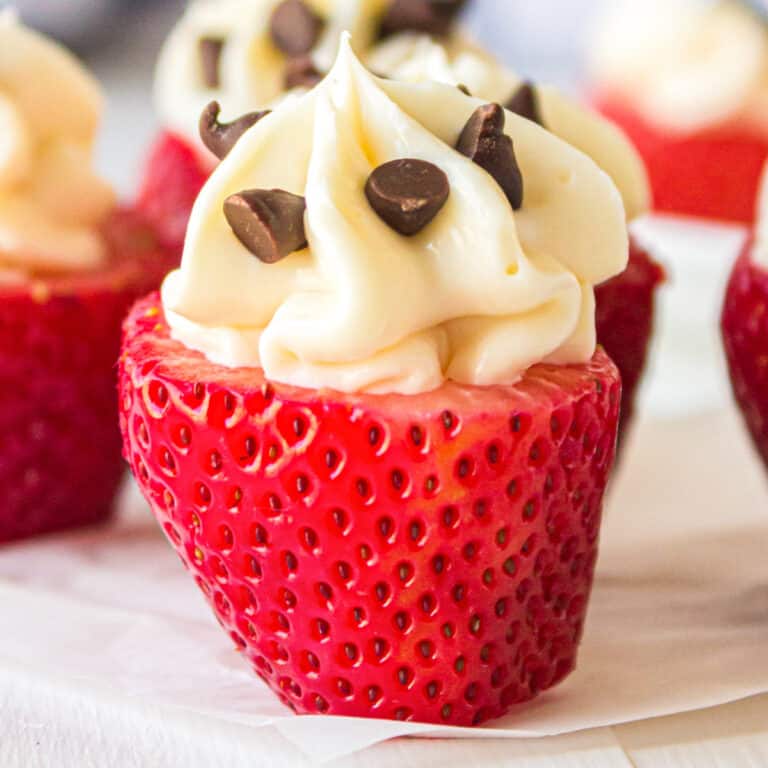
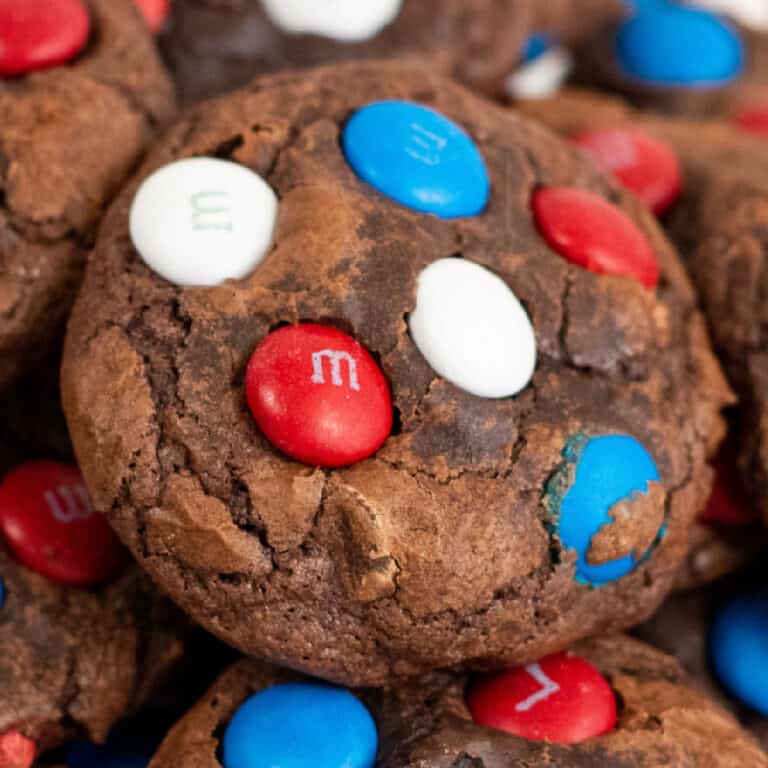
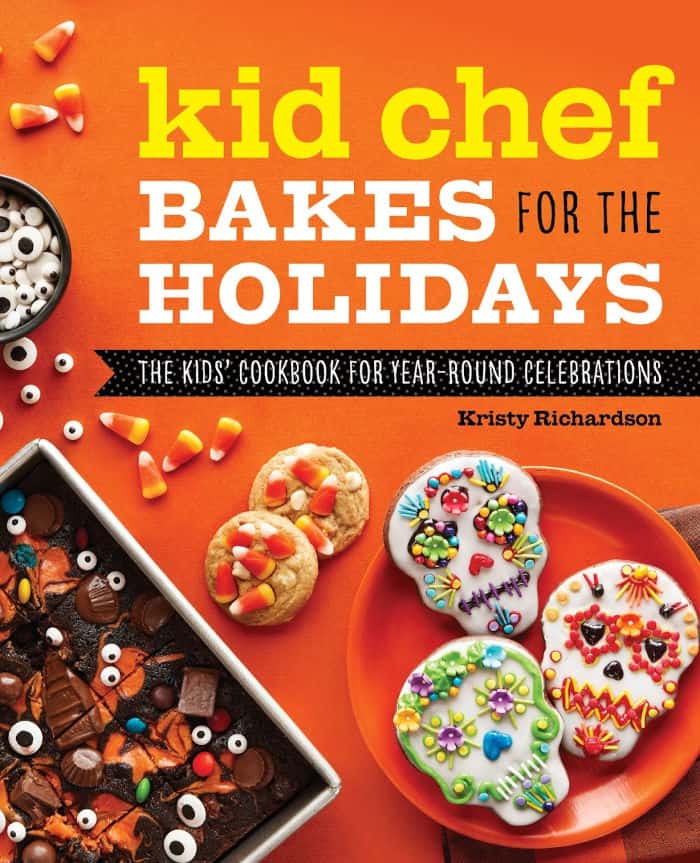
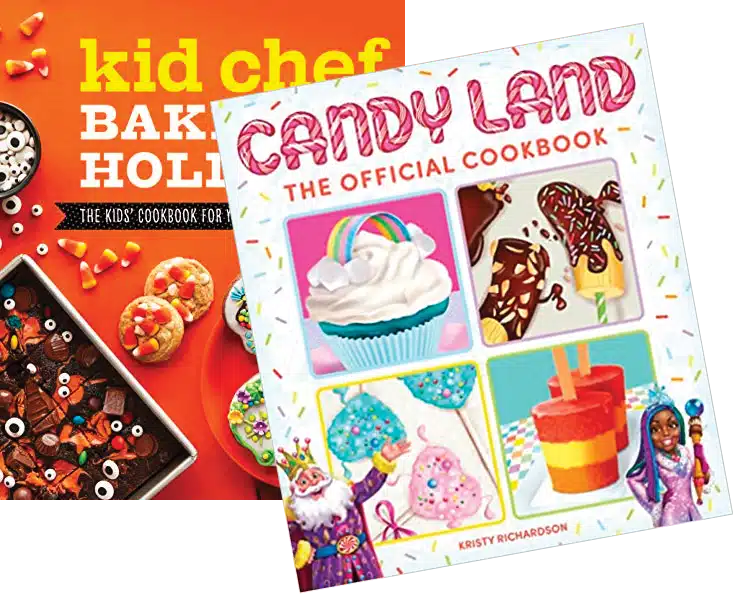

I want to use parchment paper for a frozen burger
You can use parchment paper to cook a frozen burger as long as the temperature you are baking at isn’t higher then about 420. Higher heat can cause the paper to burn.
I am 70 and have never heard of parchment paper. I will give it a try. No only question is , is it expensive. Guess I’ll find out soon. Thank you for the information.
Thank you for such a thorough explanation of parchment paper. I’m a 75 year old home baker and just learned a lot. 🍪🍪🍰🍰🧁🧁🥣🥣🍞🍞
You’re very welcome Lynn, I’m so glad this parchment paper article helped you! Thanks for your comment, it made my day brighter. Hope it continues to help your baking too. -Kristy